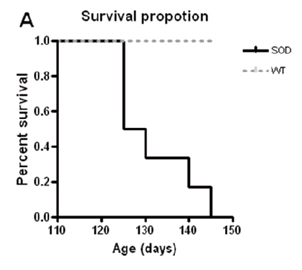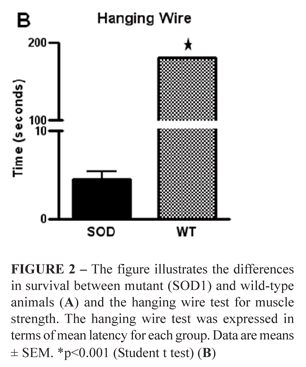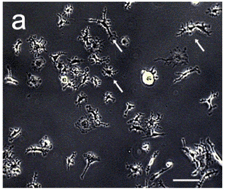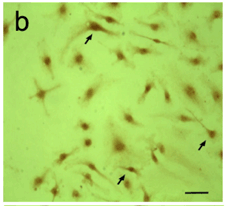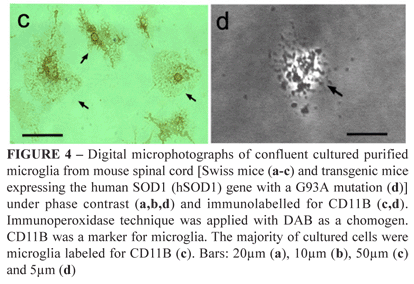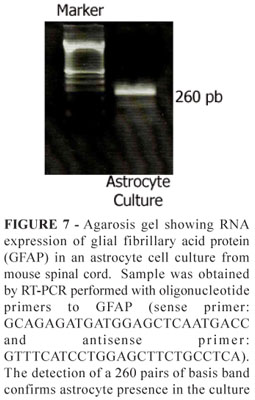PURPOSE: Amyotrophic lateral sclerosis (ALS) is a fatal neurodegenerative disease that displays a rapid evolution. Current treatments have failed to revert clinical symptoms because the mechanisms involved in the death of motoneuron are still unknown. Recent publications have put non-neuronal cells, particularly, astrocyte and microglia, in the scenario of pathophisiology of the disease. Animal models for ALS, particularly transgenic mice expressing the human SOD1 gene with a G93A mutation (hSOD1), are available and display the phenotype of the disease at cellular and clinical levels. However, it is a lack of detailed information regarding the methods to study the disease in vitro to better understand the contribution of non-neuronal cells in the onset and progression of the pathology. METHODS: Colonies of Swiss mice and transgenic mice expressing hSOD1 mutation as well as non-transgenic controls (wild-type) were amplified after a genotyping evaluation. Disease progression was followed behaviorally and mortality was registered. Highly purified primary cultures of astrocytes and microglia from mouse spinal cord were obtained. Cells were identified by means of GFAP and CD11B immunocytochemistry. The purity of astroglial and microglial cell cultures was also accompanied by means of Western blot and RT-PCR analyses employing a number of markers. RESULTS: The disease onset was about 105 days and the majority of transgenic mice displayed the disease symptoms by 125 days of age and reached the endpoint 20 days later. A substantial motor weakens was registered in the transgenic mice compared to wild-type at the end point. Immunocytochemical, biochemical and RT-PCR analyses demonstrated a highly purified primary cultures of spinal cord astrocytes and microglia. CONCLUSION: It is possible to achieve highly purified primary cultures of spinal cord astrocytes and microglia to be employed in cellular and molecular analyses of the influence of such non-neuronal cells in the pathophysiology of ALS.
Amyotrophic Lateral Sclerosis; Astrocytes; Microglia; Neurons; Cell Culture Techniques; PCR; Mice; Transgenic


